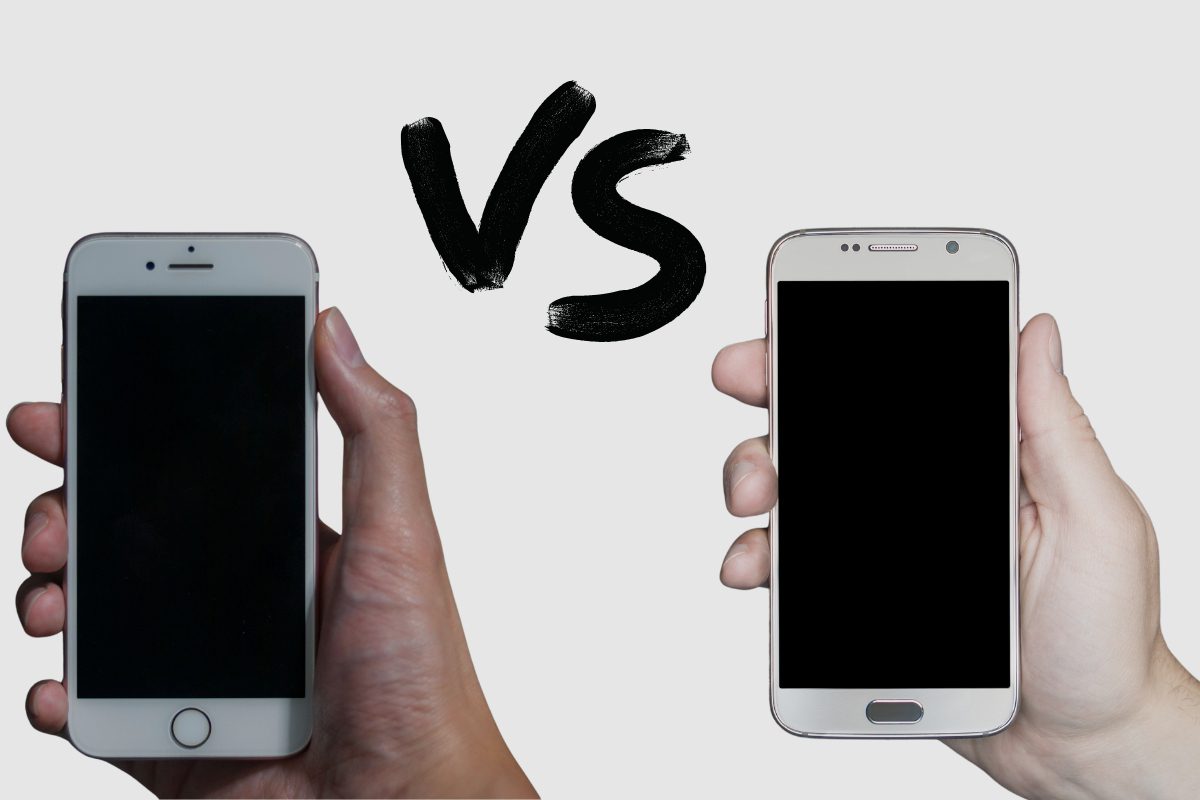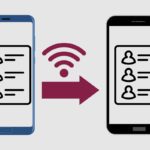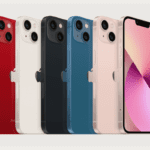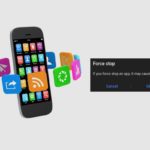Have you ever wondered which phone device is easier to use – iPhones running iOS or Android phones? With so many options to choose from, it can be tough to decide which provides a more seamless user experience tailored to your needs.
In this post, we’ll explore the key differences when it comes to usability and intuitiveness to help you determine which phone is more user-friendly for you.
Key Takeaways
- iPhones tend to offer greater consistency and integration across Apple devices and services, while Android allows for more customization and flexibility.
- Android phones have many more hardware and software options, while iPhones offer a more standardized experience.
- iOS is seen as more intuitive for basic functions like messaging, while Android provides more advanced customization features.
- iPhones tend to fare better in privacy controls and app regulation over user data access.
- Ultimately, the iPhone offers better out-of-box usability for less tech-savvy users, while Android is preferred by those wanting more control and options.
Related Post to Read: 15 Reasons Why Android Is Better Than iPhone.

Which Phone Platform Offers a More Intuitive and Seamless User Experience – iOS or Android?
When it comes to user-friendliness, both iPhones and Android phones have their own strengths and weaknesses. Apple’s iPhones tend to shine when it comes to offering a more consistent and streamlined experience right out of the box.
The uniformity of hardware and software generally provides a simpler, more intuitive interface to navigate compared to the fragmentation of the Android landscape.
Android phones, on the other hand, enable much more flexibility and customization to tailor the experience to your liking. However, this requires a deeper level of technical know-how. So, for those less tech-savvy, the endless options can actually prove more difficult to navigate and utilize effectively.
Ultimately, iOS offers better baseline usability thanks to Apple’s tight integration of software and hardware. But Android appeals to those comfortable tinkering to mould their phones to their needs.
Ease of Use
For many, iPhones simply feel easier to use straight away. Apple is renowned for human interface design, crafting hardware and software to work seamlessly together. As a result, even basic functions like sending messages, capturing photos, and navigating feel slick and intuitive. Android still suffers from fragmentation across brands and OS versions, creating inconsistencies in user experience.
iPhones also benefit from offering fewer but higher quality apps that tend to be better optimized for the platform. Meanwhile, many Android apps still don’t take full advantage of larger screens and other hardware features that vary across devices. This enables a more uniform experience for iPhone users.
Consistency and Familiarity
Another major factor is consistency in interface design and functionality. As the only manufacturer of iPhones, Apple has full control in providing a reliable, familiar experience across models and generations. iOS follows consistent interface guidelines, leading to greater intuitiveness once you learn the basic patterns.
In contrast, the open Android platform sees countless manufacturers putting their own “skin” over the OS. So, Android phones vary widely in look, feel and functionality. Those differences mean a learning curve switching Android brands and struggling to find where apps and settings have moved around.
This consistency also applies when using other Apple devices. Thanks to tight ecosystem integration, those familiar with Macs, iPads or Apple Watches will feel instantly at home with an iPhone’s interface and features. This builds further familiarity to enhance usability.
Discoverability
A key tenet of user-friendly design is discoverability – enabling users to intuitively find the tools and features they need. This is another area where Apple excels through simple menus, universal search tools like Spotlight, and spatial consistency, making options easy to locate. Android still relies heavily on hamburger menus that obscure tools from plain view.
The iPhone experience also offers greater transparency over what’s happening on your device. It’s easier to monitor things like app data usage, location access and battery drain to understand what could be impacting performance. That deeper insight helps users troubleshoot issues themselves.
Privacy and Security
Data privacy has become a major concern for smartphone owners lately. Apple has positioned themselves as the privacy-focused choice, with security features like App Tracking Transparency giving users greater control over their data. This prevents apps from collecting personal data without consent.
Meanwhile, Google’s business model centres around user data for advertising purposes. Android phones reflect that in their default settings and app permissions. While recent versions of Android have added more privacy options, the iPhone still offers the most reassurance out of the box.
For those less tech-savvy, having those protections enabled by default enhances the user experience by preventing unwanted tracking or profiling. It’s one less thing to worry about.
Where Android Offers Stronger Usability
All that said, avid Android supporters would argue their platform does user-friendliness better in certain ways. Here are some of Android’s strengths when it comes to usability:
More Choice: Android’s open ecosystem means countless options to suit different preferences and budgets. Users can find the right device size, features, price and style for their needs. iPhones offer far less choice in hardware.
Customization: Android phones are highly customizable through widgets, launchers, themes and gesture controls. Everything from the home screen layout to notification sounds can be tailored to individual tastes. iPhones offer minimal customization by comparison.
Split-Screen Apps: Android has offered split-screen app views for years now. This allows managing multiple apps simultaneously, like messaging someone while watching a video. While Apple eventually introduced a basic split view, Android’s implementation remains far more flexible.
Back Button: Unlike iPhones, Android phones retain a handy back button for easy one-handed navigation through apps. This offers more transparency in moving up through previous screens. iOS requires awkward gestures or tapping tiny header buttons instead.
Open Ecosystem: Android’s open platform enables apps like launchers, file managers and custom keyboards that just aren’t possible with Apple’s walled garden. So users gain access to added tools and capabilities for advanced personalization.
Gaming: Mobile gaming remains a key strength area for Android, enabled by cross-platform game stores, emulator apps for old games and support for Bluetooth controllers. iOS gaming remains largely limited to titles available on the App Store.
So, while iPhones may still win for pure simplicity, Android offers smarter usability in many ways for power users willing to dig deeper and customize their experience.
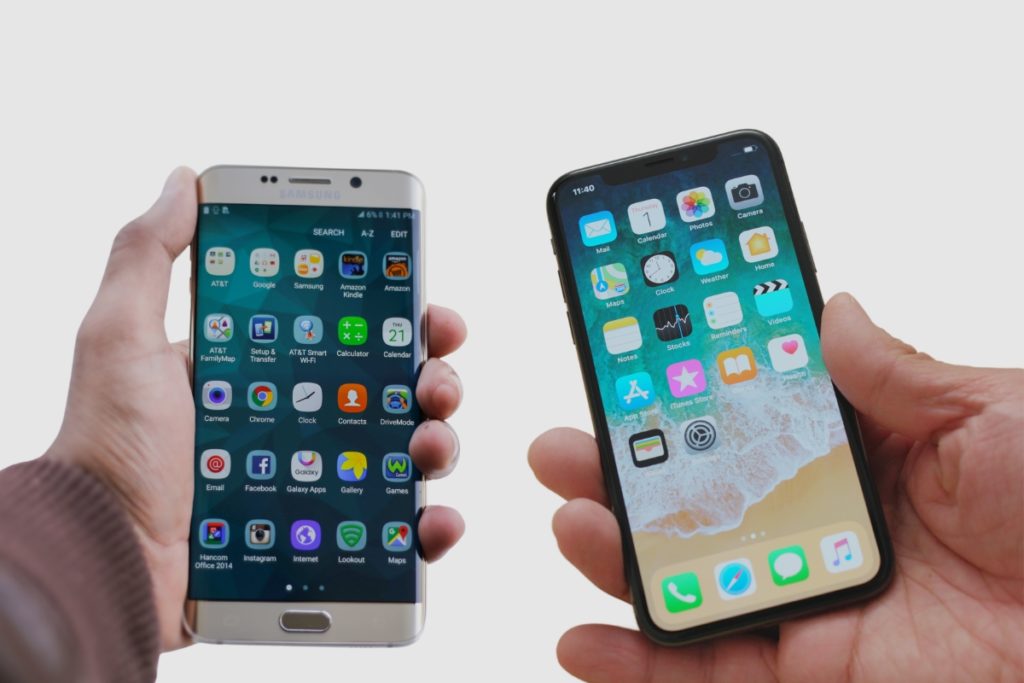
Factors Influencing User-Friendliness of Phones
As we’ve explored above, both major phone platforms have strengths and weaknesses when it comes to usability. But why does iOS generally feel more intuitive out of the box? And what allows Android to enable deeper customization for improved usability? Here, we’ll break down some of the key factors at play.
Fragmentation vs Uniformity
The biggest differentiator is Apple’s total control over both hardware and software vs Google’s open-source approach. iPhones run exclusively on iOS and Apple A-series processors. This uniformity means apps and features can be tightly optimized. Apple also retains tight control over app guidelines and interface conventions.
The result is a highly consistent experience where everything feels cohesively designed. Once you learn iOS conventions, new apps and upgrades feel familiar.
In contrast, Android powers over 24,000 distinct devices across thousands of brands. Chips, specs, screen sizes and industrial design vary enormously. And different manufacturers put their own “skins” over Android as well.
While Google provides interface guidelines and principles, device makers take plenty of liberties in customization. So, apps and system menus look and behave inconsistently across brands. This fragmentation means compromises in optimization and conformity.
For the average user who just wants things to work predictably, Apple’s uniformity simply provides an easier learning curve. But for those who prioritize choice and customization in both hardware and software, Android’s flexibility enables them to mould devices to their preferences.
Default Settings and App Permissions
Out-of-box usability also comes down to default settings and app permissions. Apple rightly perceives that most users value privacy and security without compromising functionality. So iOS enables key protections by default without burying them in settings menus. Features like App Tracking Transparency also ensure users opt-in to any data collection.
As an advertising company reliant on user data, Google takes a more liberal approach with Android defaults, allowing broader app access and background processing. So, Android phones often enable richer experiences but require more know-how to lock down permissions. Most users won’t change defaults, though, sacrificing privacy for convenience.
Again, Apple errs on the side of usability for the masses through smart protections enabled upfront without user input. But advanced Android users can still tighten things up to their comfort level.
Predictive Design vs Flexible Design
Apple excels at predictive design – using data and testing to shape experiences to best practices. iOS adheres stringently to human interface guidelines crafted over decades. This ensures optimal usability for the widest range of users based on consistent behaviours and pain points.
Android design allows for greater flexibility, though, giving advanced users more control to adapt things to their personal preferences. Default apps and menus may not offer peak usability. But third-party options let users replace and tweak core functions to their liking.
So, iOS still tends to provide a smoother out-of-box experience following Apple’s opinionated design principles. But Android enables more personalization for those willing to experiment with alternatives.
Integration vs Interoperability
Seamless integration with companion devices and services also plays a role. Apple’s walled ecosystem ensures iPhones work fluidly with other Apple products through features like Continuity, AirDrop and iCloud sync. This tight integration greases the wheels for tasks like syncing content or taking calls across devices.
As an open platform, Android enables greater interoperability with a range of products and services. However, getting devices and apps from different brands to play nicely together requires more technical finesse. So, tasks may not feel quite as streamlined compared to Apple’s uniform ecosystem.
Once again, Apple provides the just-works experience, while Android offers a greater choice of devices and cross-platform services at the cost of consistency.
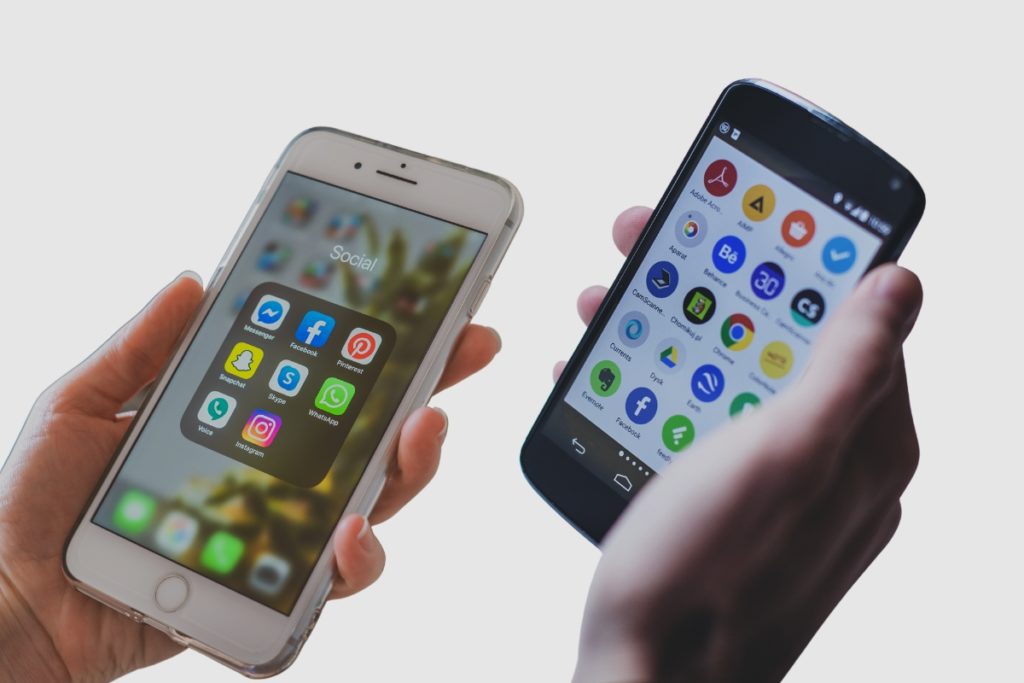
Which Phone Is More User-Friendly for You?
As we’ve explored, both iPhones and Android phones have strengths and weaknesses when it comes to usability and user experience design. iPhones offer greater simplicity and consistency through Apple’s tight integration and opinionated principles. Android provides more flexibility and personalization through countless options and customization capabilities.
So, which platform provides better overall user-friendliness comes down to the individual’s priorities and technical comfort level.
Good For iPhone Users
Simplicity-focused: If you want an intuitive interface, seamless ecosystem, and strong security without hassle, the iPhone is easiest to use out of the box.
Not tech-savvy: With little customization needed, iPhones work great for those less comfortable adjusting complex settings. Reliable performance reduces troubleshooting.
Cross-device users: Thanks to Apple’s tight integration, the iPhone works seamlessly with Macs, iPads and other Apple devices through shared services.
Creative pros: From photographers to video editors, creative fields benefit from the iPhone’s power, performance and rich app ecosystem. The uniformity also aids workflows.
Health & fitness focused: The Apple Watch only works with iPhones. And no platform offers better health app integration for both tracking data and using it.
Good For Android Users
Control focused: If you value customizing your phone’s look, feel, sound and functionality to your needs, Android is easily more user-friendly.
Budget-focused: With a huge variety of affordable handsets, Android offers premium features and good usability at lower price points lacking with iPhones.
Power users: Extensive personalization through launchers, automation and other tools allows tailoring workflows to improve usability.
Gaming-focused: From emulators to controller support and cross-platform game stores, Android provides a stronger gaming experience.
Privacy proactive: Willingness to adjust app permissions, toggles and settings means Android can provide robust usability and privacy.
It’s a Personal Choice
Ultimately, the question of iPhone vs Android usability has no definitive answer that applies universally. On average, iOS likely provides smoother out-of-box functionality for less technical users. But Android enables much deeper personalization for those willing to tinker under the hood.
So try both platforms, if possible, through friend’s devices. Consider which factors above resonate most. And don’t assume change is hard. With a little time investment growing accustomed to different conventions, both platforms offer immense usability. Choose the one catering best to your individual needs and priorities.
Final Thoughts
The differences in Apple’s and Google’s design philosophies stem from their divergent business models. Apple earns profit from device sales, so crafting the most usable experience out of the box builds brand loyalty.
Google relies on services and user data, so enabling adaptation and choice across many partners takes priority over singular design.
This leads iOS to generally feel more user-friendly to average users through its simplicity, consistency and predictive design. But Android provides added usability for power users willing to embrace customization and interoperability. So, neither platform definitively “wins”.
Ultimately, usability is subjective, based on the individual’s technical comfort, priorities and even aesthetic taste. With plenty of adjustment on either platform, both iPhone and Android phones can enable delightful, productive experiences, making your life easier.
So try not to get too caught up in debates about which is better. Instead, focus on which platform aligns best with your lifestyle, preferences, and tech comfort level. Remember, the most user-friendly phone is the one that feels right in your hands and meets your specific needs and expectations.
Image Gallery – Which Phone Is More User-Friendly: iPhone or Android?



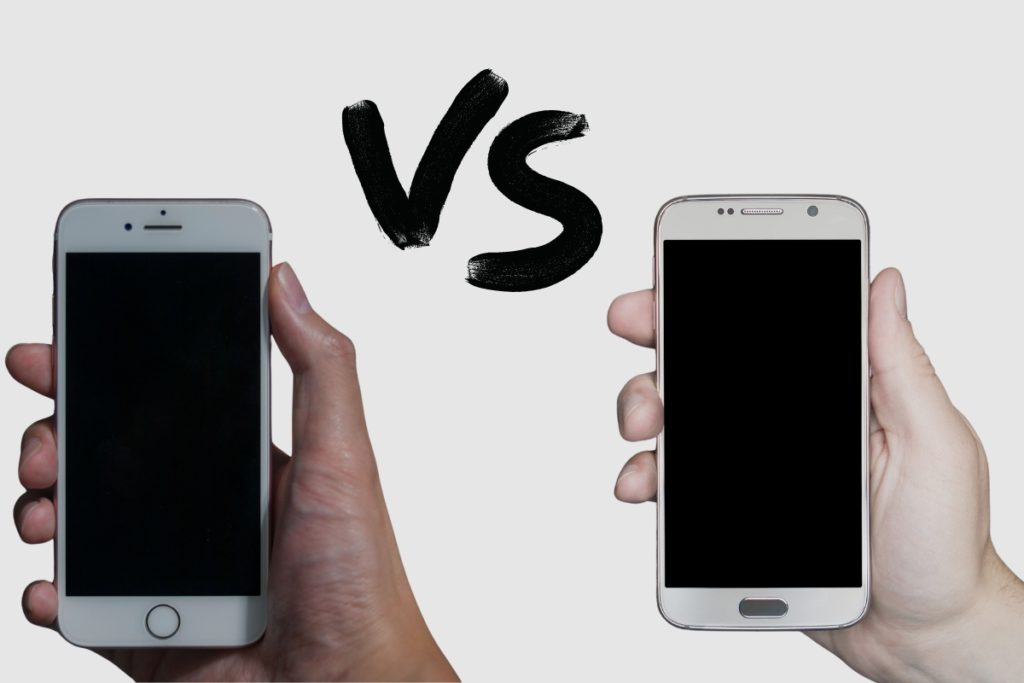
Useful Links:
Other Related Posts to Read:
- 15 Reasons Why Android Is Better Than iPhone.
- How to Transfer Contacts from Android to Android via WiFi.
- Can iPhone Users See When You Read A Text On Android Phones?
- How to Check WiFi GHz on Android Devices.
- How to Connect to Fly-Fi on Android Devices.
- What Android Phones are Compatible with Dexcom G6?
- What Happens When You Force Stop An App On Android Devices?
References:
- About Android, Android Operating System.

